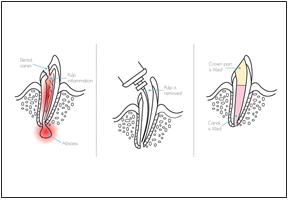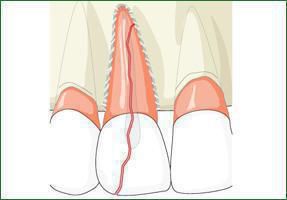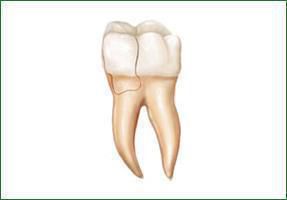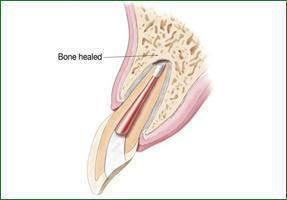Injuries in children
Traumatic injuries are quite a common problem in young children with immature permanent teeth, and they often lead to pulp necrosis - a clinical diagnostic category that indicates the death of the dental pulp.
An immature permanent tooth is a newly erupted permanent tooth with its root apex that hasn't formed completely. It takes at least three more years for the root development to complete after a permanent tooth emerges in the mouth. A two‐layered cellular structure called the Hertwig's epithelial root sheath (HERS) determines the shape and form of these developing roots. The development of teeth roots includes an increase in root length and root wall thickness and narrowing of root canals in the root apex. Any disruption in the blood supply to HERS resulting from pulp necrosis can disrupt cell proliferation and differentiation, causing root development to stop. This situation can also lead to abnormal hard tissue deposition. Thus, immature roots with necrotic pulps in immature permanent teeth are characterized by wide root canals with open apex and thin walls.
Endodontic Treatment for Children
Primary Teeth
If an injury happens to your child's primary tooth, a root canal treatment may be necessary to save it. The retention of the primary tooth is essential to maintain space and avoid future orthodontic treatment.
Immature Permanent Teeth
Suppose a trauma or injury happens to your child's immature permanent teeth. In that case, endodontic treatment, including modified versions of root canal treatment, may be necessary to retain as much of the healthy nerve tissue as possible because it's necessary to help the tooth complete its development.
Saving an injured tooth
Mentioned below are a few of the procedures that improve the chances of saving an injured immature tooth:
Apexogenesis
In cases of injuries where the nerve is exposed but is still healthy, Apexogenesis is done to encourage the root to continue development as the pulp is healed. The inflamed vital pulp tissue is covered with medication to keep it alive and healthy and encourage growth. As the child gets older, the root (apex) tip will continue to close, and the walls of the root canal will thicken. The more mature the root becomes, the better is the chance to save the tooth.
Apexification
If the nerve is no longer vital, the unhealthy pulp is removed. A bone-compatible material called MTA, an artificial barrier, is created to immediately seal the apex and fill the root canal system. However, with this, the development of roots are ceased, making the tooth susceptible to fractures. So it is essential to have the tooth properly restored by your dentist.



